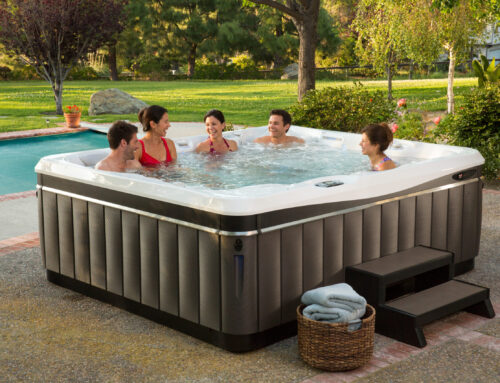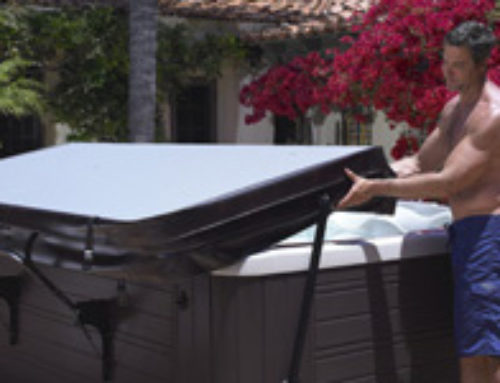The Dos And Dont’s Of Designing Decks For Hot Tubs
This top tips for building hot tub decks post is from the experts at Real Cedar.com, check them out to see why you should consider authentic cedar for your deck.
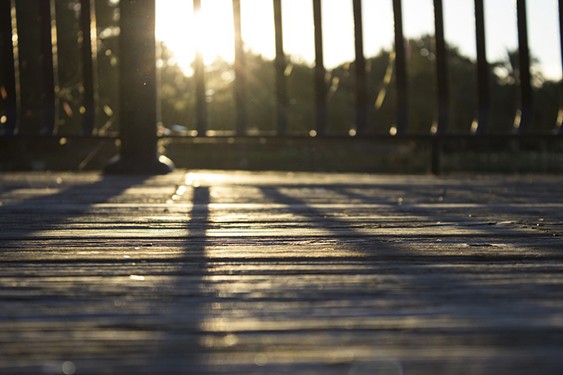
Designing a deck specifically for a hot tub requires a lot of forethought. There’s additional engineering considerations, ergonomic factors, aesthetic principals – to name just a few building-plan issues.
These added challenges are something that Stéphan Beaulieu understands better than most. That’s because the Montreal contractor and president of Patios et Clôtures Beaulieu, Inc. has more than 200 ideas for hot tub deck designs under his tool belt. And these aren’t your average slapped together platforms. His fully integrated outdoor living spaces are renowned for maximizing the soakers’ experience – year round!
“I have a good understanding of what works and what doesn’t work when integrating a hot tub into a deck design,” says the award-winning landscape carpenter, who was recently featured as the “Pro of the Week” on RealCedar.com.
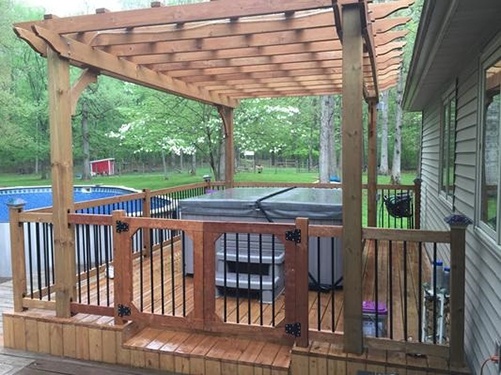
As someone who is truly passionate about his craft, Beaulieu is always willing to share some of his tricks of the trade. Here, then, are his top tips for building hot tub decks:
Choose the Right Hot Tub Decking Material
Beaulieu uses Western Red Cedar for most of his projects. That’s because it’s naturally resistant to rot, decay and insects. Plus, it just looks beautiful – especially when paired with a brand new hot tub! “It’s a personal and intimate space where people interact and create memories. A deck should be an extension of your personality as well as an extension of the inside of your home.”
“Considering the quality/price ratio, Western Red Cedar is the best material you can use to create beautiful and long-lasting outdoor structures. Period.”
The Pros and Cons of Decking Material Options
Polymer and Synthetic Composite Decking Materials |
|
| Description: Made from wood fiber and non-renewable petroleum products with minimal recycled plastics. | |
Pros: Very stable and low maintenance. Wash 2-3 times per year. |
|
Cons: Gets very hot for your feet with sun exposure. The wood fiber has a tendency to create mold. Uses non-renewable resources, is not bio-degradable and is not recyclable. It also scratches easily and is not sandable for repair. |
|
Pressure Treated Wood |
|
| Description: Made of Spruce, Pine and Fir and treated under pressure at the factory with chemical preservatives that include copper. The preservative treatment is made to the surface only and not throughout the lumber. | |
Pros: Not expensive and is recyclable. |
|
Cons: Has a tendency to split and warp. Average life expectancy with weather exposure is 15 years. Since the preservative treatment is only to the surface, scratches and damage can shorten the life expectancy of the wood. |
|
Western Red Cedar |
|
| Description: All natural insect resistance, renewable resources and 100% recyclable material. No chemical preservatives. Natural long life expectancy as a building material. | |
Pros: Naturally protected against insects and fungus. Beautiful to look at when new and develops a natural gray patina over time. Fine and long wood grain makes it very stable. No cracking and no warping. Lasts an average of 30 years. Never requires chemical preservatives or treatment. Soft to the touch with minimal splinters. |
|
Cons: If you decide to stain it (not necessary but for color preference) you will have to repeat the process every 2-3 years. Without stain it will turn a natural gray over time. |
|
IPE Wood |
|
| Description: Comes from Brazil and is a naturally hard wood. Useful for deck flooring and stairs. | |
Pros: Contains almost no knots. Last a very long time; 40-50 years. Very low maintenance. |
|
Cons: Should be treated with oil once to twice per year. |
Think Carefully About Hot Tub Location in Your Home
In terms of placement, Beaulieu’s number one rule of thumb is to locate the hot tub close to the patio door – particularly if you live in a colder climate.
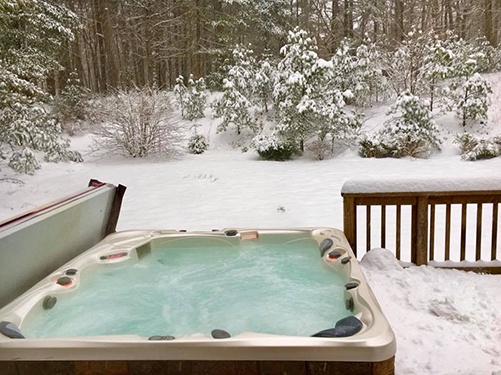
“The further the hot tub from the door, the less you will use it – especially during winter, unless you like to shovel snow as a workout before relaxing in your hot tub! Also, electrical wire used to supply power to the hot tub is very expensive by the foot. Another reason to place the hot tub close to the house.”
How Should You Install a Hot Tub On a Deck?
It’s the age-old question: Should you place your tub atop or plumb with the deck? Beaulieu says neither. For him, 20 inches from the floor of the deck to the top of the tub is ideal.
“This height allows you to get in and out safely because your hips stay level with the deck; and therefore optimal for balance. Often the mechanical arm anchoring system to help lift and put back the cover goes down to about 20 inches or more, depending on the cover.”
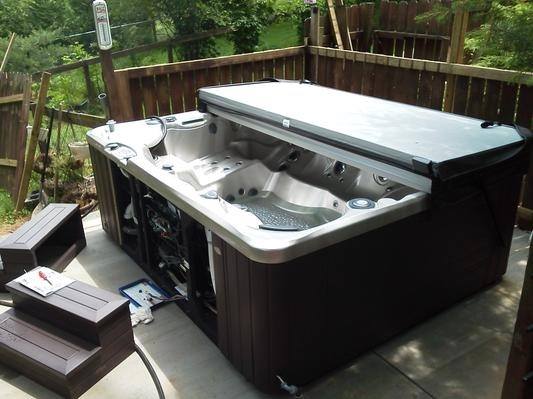
Leave Access Space Around Your Hot Tub for Tech Support
Beaulieu always builds removable floor panels into the frame to ensure accessibility for pump maintenance, etc. Sometimes, only one side is needed, but depending on the hot tub model, you may need to do this on all four sides.
“Homeowners should get a professional technician to do the maintenance work. With that in mind, the panels need to create a clearance of 18″ – minimum. Less than that, and you’ll need to look for an ex-contortionist from Cirque du Soleil to do the tune-up work.”
Carefully Consider the Gap Between the Deck Boards
As for spaces between the deck and the hot tub, you need to factor in, among other things, soaker safety and lumber longevity.
“The gap should be small enough to prevent your toe from entering, but large enough for water to drain and the wood to expand and contract. We leave ½” space on our projects.”
Build a Solid Deck Base to Support The Hot Tub Weight
When it comes to structural support, the safest bet is a solid base independent of the deck. But if you want to go the post and cement footing route, Beaulieu recommends consulting a professional to ensure your load calculations are correct.
“All our projects usually feature a concrete slab or a compacted crushed stone base. If the hot tub absolutely needs to be resting on the deck, an engineer should be hired to approve the plans.”
For more information, visit: https://www.adeckcompany.com/blog


